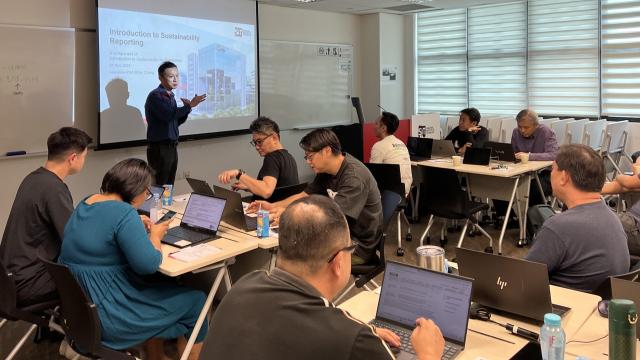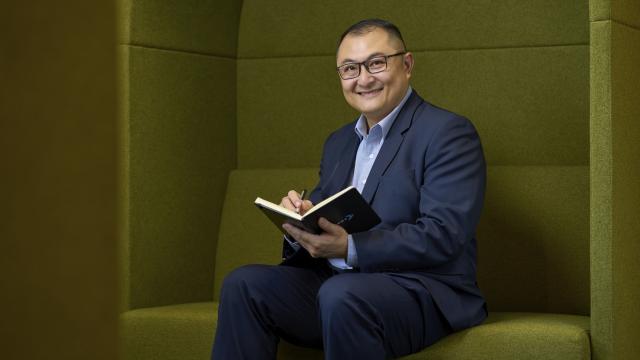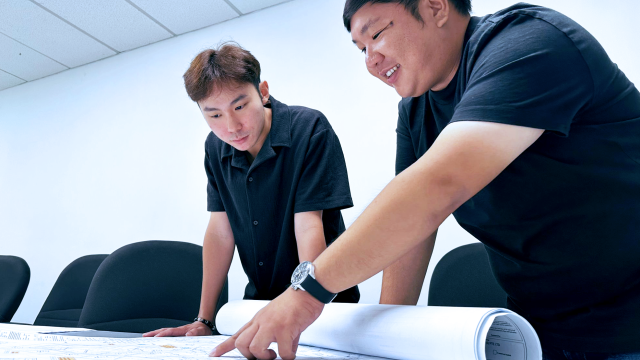GovInsider sits down with Assistant Professor Frank Guan of Singapore Institute of Technology to find out the key advancements in immersive technologies, and the main opportunities for industrial application.
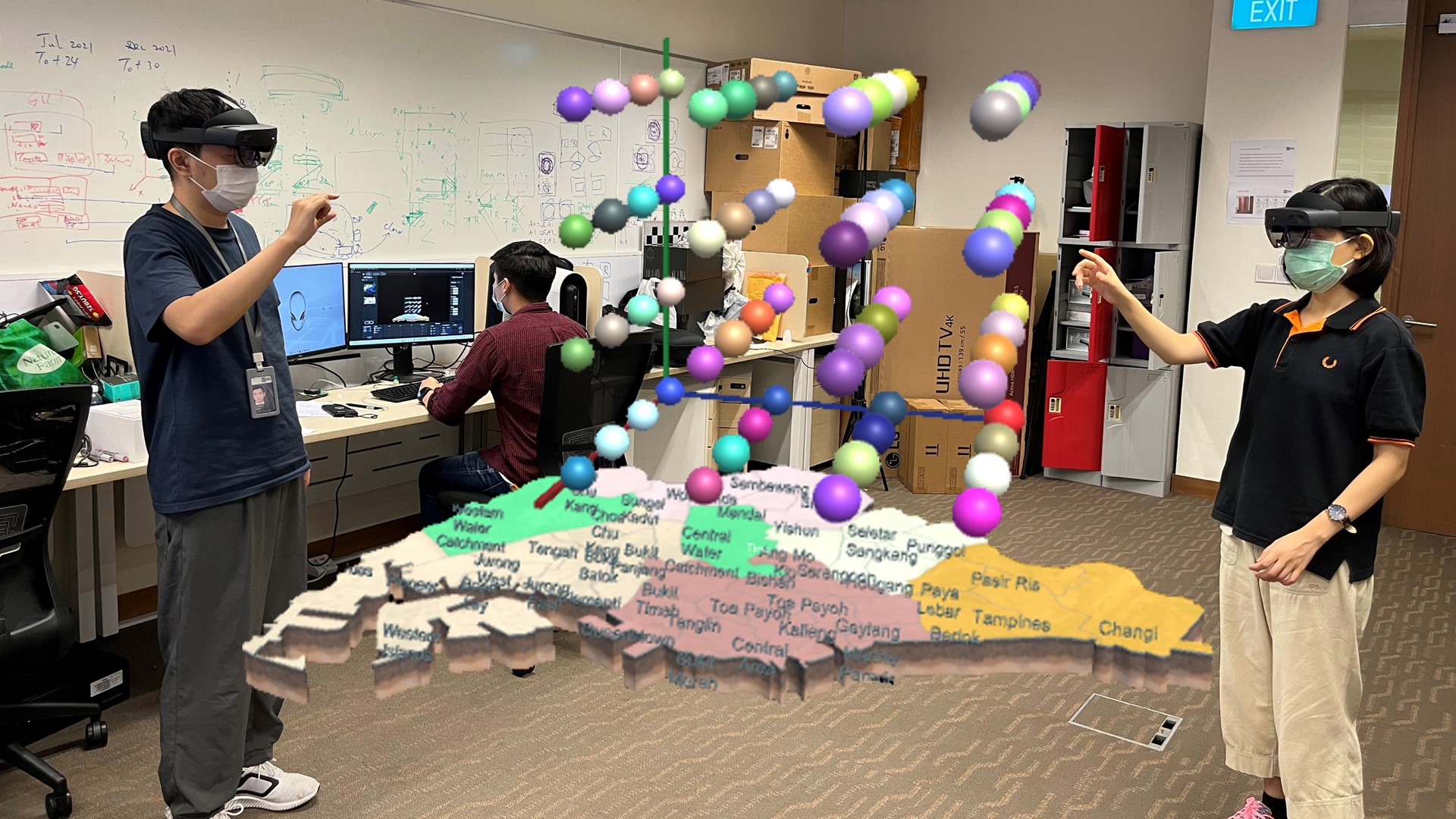
SIT researchers testing a novel system that allows 3D data visualisation using collaborative Augmented Reality (ViCollAR). The system enables participants to interact with virtual objects in the same real-time immersive environment. (Photo: Frank Guan)
Last year, Barbados opened a diplomatic embassy in Decentraland in the metaverse. Although real estate in Decentraland can cost millions of dollars, the nation made this move so that anyone on the planet is able to knock on the doors of the same embassy, saving costs overall.
For those who are still baffled by this bizarre new dimension of reality, Assistant Professor Frank Guan, Infocomm Technology cluster, Singapore Institute of Technology (SIT), characterises the metaverse as a digitalised parallel world that can allow people to interact and complete tasks that they would previously complete in the real world. “People will also have routine operations, just as they do in the real world,” Asst Prof Guan says.
Even in its early stages of adoption, the metaverse already means a vast many things to various groups of people. Asst Prof Guan, who specialises in Virtual Reality (VR), Augmented Reality (AR), and Artificial Intelligence (AI), believes that this is a positive sign that the metaverse has the potential to be applied in many different industries and is “widely accepted by a lot of parties”.
GovInsider breaks down Asst Prof Guan’s take on the key industrial applications of the metaverse and immersive technologies, and what it means for different sectors in Singapore.
What the Metaverse is Good for
“I don’t think the metaverse will completely replace the physical world,” Asst Prof Guan tells GovInsider. There are some sensory aspects that immersive technologies have yet to account for, and these will favour some applications of the metaverse over others.
The metaverse is currently more focused on visual and audio experiences, and less on touch and taste. Therefore, one would be less inclined to purchase real-world clothes in the metaverse as they would not get to feel the texture of the fabrics in advance, for example. Neither would one host a lunch or dinner within the metaverse, points out Asst Prof Guan.
Despite these current limitations, a lot of things can still be done in the digital world. “The metaverse can remove the barriers of physical distance, and allow us to remotely, but dynamically, interact with people from other countries,” says Asst Prof Guan.
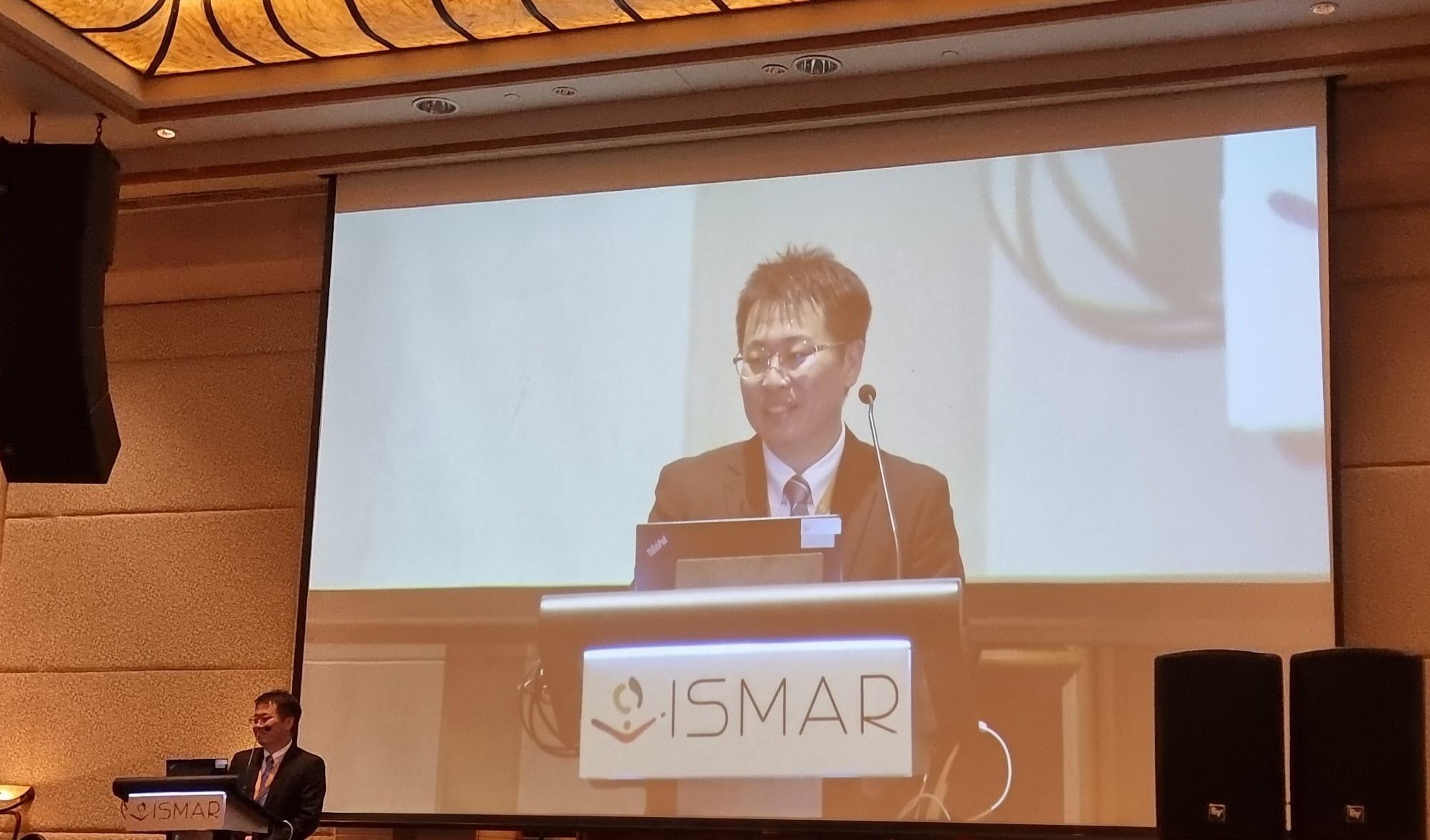
Asst Prof Guan was the General Chair of the 21st IEEE International Symposium on Mixed and Augmented Reality (ISMAR 2022) conference held in Singapore recently. (Photo: Frank Guan)
Post-pandemic, virtual meetings have become a staple in the business, education, and even social worlds. Popular video conferencing platform Zoom saw 200 million daily meeting participants in May 2020, and this figure rose by 100 million just a month later. The Metaverse possesses the potential to provide a more realistic and interactive environment for people to have virtual meetings, says Asst Prof Guan.
In the education sector, students and teachers can gather and be in the same immersive learning environment, regardless of where they are. In healthcare, the metaverse could spell more equitable access to medical services as doctors can remotely diagnose patients in far-flung areas.
The metaverse is also suitable for providing people with a taste of something they might be interested in before they actually commit to it. In real estate, interested buyers can first view a digital twin of a property before making a physical trip to complete the transaction. The same approach can be applied to travel and tourism, when people visit virtual simulations of an attraction before seeing it in person, Asst Prof Guan says.
Finally, gaming is an industry that will proliferate alongside that of immersive tech, according to Asst Prof Guan.
“When people think of games, they might just think of them as an entertainment option…but more developers are starting to look at gamification for education to achieve better learning outcomes,” Asst Prof Guan tells GovInsider. Indeed, a 2015 study showed that gamified learning showed a significant increase of 25 per cent in student retention rate and 23 per cent higher scores compared to traditional teaching methods. Gamification techniques assist in contextualising problem statements and retention of theories.
Gamified learning is not only more productive but also more effective, and hence has become increasingly popular as an option for professional training. “VR and AR can generate hyper-realistic scenarios that might be costly or not easy to reproduce in the real world, but easy to replicate in the digital world,” Asst Prof Guan says.
Employers can reduce training costs, minimise training space, and provide easier access to staff training. For example, a team of SIT researchers led by Asst Prof Guan collaborated with a local organisation to develop an AR-powered game, REAP, towards vocational training. With the game, the trainees are able to learn critical skillsets required for running a food business without the constraints of space, time, and cost needed for raw materials.
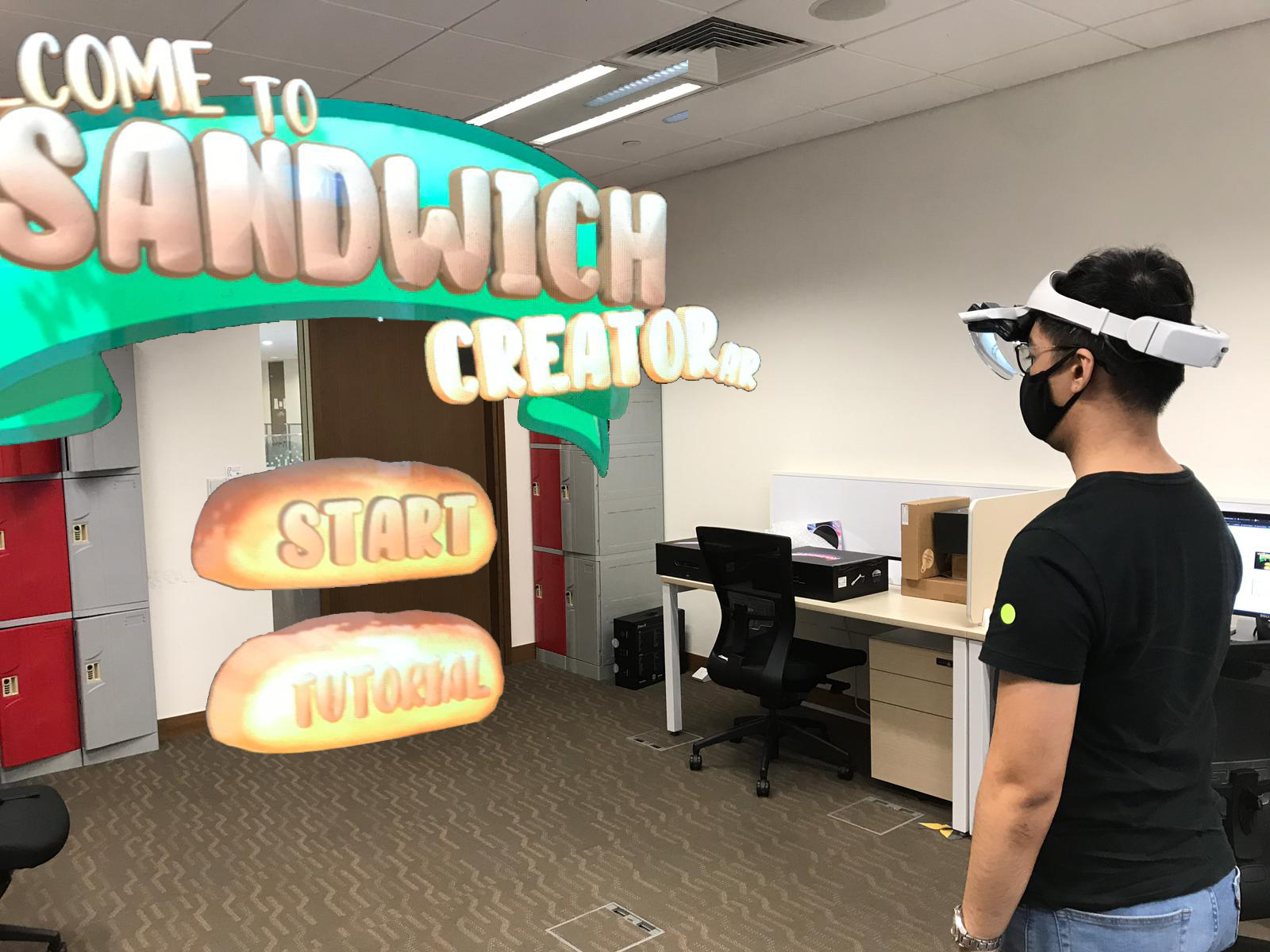
An AR-powered gamified vocational training for the food industry was developed by a team of SIT researchers led by Asst Prof Guan. Trainees are able to learn and improve the skillsets required for running a food business. (Photo: Frank Guan)
A Growing Space
Apart from VR and AR, the metaverse is set to engage a lot of other rising technological advancements and trends, such as artificial intelligence (AI), non-fungible token (NFTs), blockchain, Internet of Things (IoT), and cloud computing, says Asst Prof Guan.
This was especially evident at the 21st IEEE International Symposium on Mixed and Augmented Reality (ISMAR 2022) conference held for the first time in Singapore and Southeast Asia. The conference saw an unprecedented number of research papers submitted, all aimed at improving fundamental technologies to make the metaverse more lifelike, observes Asst Prof Guan, who was the General Chair for the event.
For example, SIT researchers demonstrated a collaborative 3D data visualisation system using AR, ViCollAR for short, at ISMAR 2022. The immersive, interactive and collaborative system allows multiple users to simultaneously and collaboratively view and interact with visualised data using their bare hands in a 3D space. Users can also freely navigate through the real spatial environment during interactions. The university has successfully developed a prototype for further testing and implementation.
SIT is also fronting the advancements of immersive technologies in other ways. Moving forward, SIT will shift its campus to the Punggol Digital District by 2024, where students can experience what they are helping to develop through a digital twin of the campus. The Living Lab will serve as a testbed for technologies – including immersive – for industry partners to bring to life their innovations with the help of academic experts like Asst Prof Guan.
This article was first published in GovInsider.

